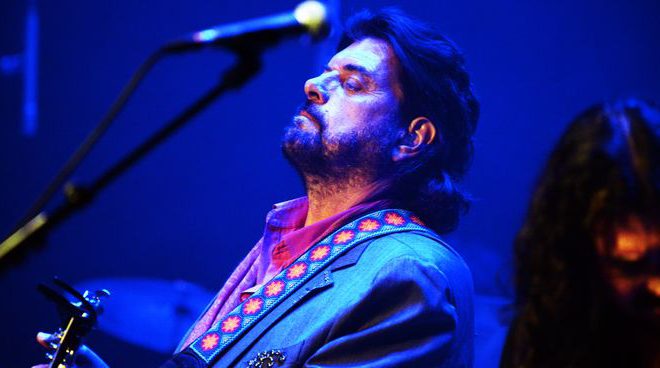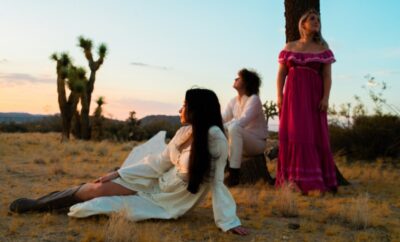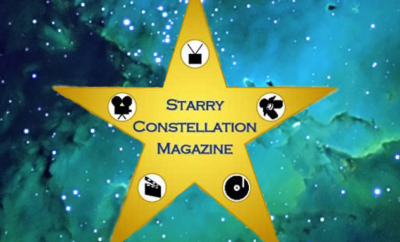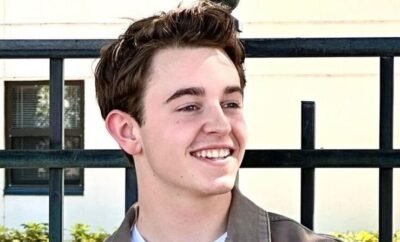 Alex Cohen
Alex Cohen
Interviews
Alan Parsons
By: Lisa Steinberg
Q) You have a lot going on lately with shows, a DVD and a book!
A) We have lots of concerts coming up! If you go to alanparsons.com you can see all the tour dates coming up.
Q) What can fans expect from a live Alan Parsons performance?
A) It’s a hits show. The DVD is an exception because of the orchestra. It’s still a great show without the orchestra. We have eight band members on stage. It’s essentially we try to represent all of the albums and play the “best of” with songs.
Q) You’ll be touring all over California, Texas and Oklahoma. Are these special stops for you?
A) We do clusters of shows. We just got back from South America where we did shows in various countries there. I think only the t-shirts says “World Tour.” [laughs] I’m not really into bus tours. We just like to keep comfortable. A lot of bands do hundreds of shows a year. We do about fifty shows. You do more than about fifty shows and everybody starts to get a little bit edgy.
Q) Is there something you always tend to do while on tour?
A) We try to find out a bit about each town we go to and see what the “must sees” are. We are like sightseeing. If there is time, we like to get out. We are into good food and wine so we like to seek out the best restaurants and wine bars. Of course, we are on the road to work, but we like to have fun at the same time.
Q) With your Alan Parsons Symphonic Project DVD release, where did you get the inspiration to use a symphony come in?
A) It’s the full band, but joined by an orchestra. Historically, the music was very heavily orchestrated. So, it was an opportunity to recap the full sound of the records. The reason for doing it in Colombia was because Colombian television asked us. They had a free concert going on in a city square and they knew the orchestra was available and asked us to do it. They wanted to air it live on Colombian television, which they did. There were twelve cameras and you get a good impression of what it is like to be there.
Q) You also have the book Art and Science of Sound Recording. Talk about the genesis of it.
A) Essentially, it is a primer for anybody who even has the slightest interest in what goes on in a recording studio. It’s gone beyond that into an educational establishment. It’s now part of the syllabus. It wasn’t really designed to be purely educational, but it has kind of become standardized in colleges and universities that teach recording. Full Sail University has been supporting us whole heartedly and helping us get our money back. [laughs] It all took much than we thought to make. It took three years to make.
Q) Where does your passion for music stem from?
A) I’ve been in the recording business ever since I was nineteen years old. I’ve got a fair amount of experience under my belt. The reason for making the program and the companion book was an effort to give something back to people who are interested in sound recording, particularly wanting to be sound engineers and producers. So many modern musicians are capable of recording now. There are so many more recording facilities than their used to be because laptop computers and garage bands. So, a lot of people need to be versed in how recording works. That’s what we have attempted to give them with this video series and the book.
Q) What is a piece of advice do you wish someone gave you when you first started out in the business?
A) The problem is that, as I’ve mentioned, there are no so many people recording perhaps without the training or experience that I have had or many of my contemporaries. Education has become an important part to get on in the business. So, I would recommend anyone trying to come into the business to go to a school and learn about the ropes of sound recording. I think no one can learn to record without collaboration with someone, groups, singers, songwriters, etc. The main advice that I would give is to keep the spirit of collaboration alive.
Q) Is there someone you have dreamed about collaborating with?
A) I have been fortunate to work with a lot of the big names in the business. I caught the end of The Beatles career and countless British group sand singers. Pink Floyd is, of course, a big milestone in my career because I engineered that band. I met all of members of The Who at various times. I respect Pete Townsend’s work enormously. I would love to have worked with him producing a record for The Who. That is something that has alluded me so far.
Q) What do you find the music industry lacking or would like to see change?
A) We need to get back to Hi-Fi. The modern world system does not know what really good sound sounds like. We’re stuck in a world of listening to music on trains, buses and jogging while listening through tiny white earbuds. That is not the reason I’m in the business. I just think people need to go to a real Hi-Fi store and listen to really good music on a really good system. The other thing I think that is lacking is the ability to have a larger attention span than three minutes. We live so much for the three minute pop song world that a three minute download. We have sort of lost the ability to turn the lights down and listen to a forty to forty-five minute album by one artist. That has made it very difficult for people like myself, particularly. A trademark of mine was a concept album that was designed to be listened to start to finish and not one song at a time. I just like to encourage people to go back to hi-fi and to listen to one artist for more than just one song.
Q) It’s been a sad year of music legend loss. Who was a loss that really hit you the most and effected the music world the most?
A) I think Prince was an absolute genius. The whole music world recognizes that. I’m as upset about that as anybody. Everybody has to go in the end, but I think that probably the biggest effect to any one individual’s’ death was John Lennon. He contributed so much to the music world that it was an incredibly sad day the day he died.
Q) When you play live, how does that effect you emotionally? Is it through the vibration of the crowd?
A) Interestingly, it is something that I have sort of adapted to because my background is as a recording engineer and producer. So, I’m a studio guy, but became a live guy in the 90’s for the first time. It has become part of my life now, but when I started playing live it was actually quite intimidating and I was very nervous and sort of insecure about whether I was doing the right thing. It is my bread and butter now. It has become more important to play live than to record now since no one is buying records anymore.
Q) What else do you want to be sure fans know about your music?
A) I just finished remixing the first album. That was originally recorded in 1976 and re-released in 1987. We are doing a big box set in December so that will be coming out on four sides of vinyl because it will be at 45rpm on twelve inch discs. So, that gives you the ultimate high quality. They’ll be two CDs, both the original 1976 and then the 1987 version. Then, there will be a third CD of all new bonus material and writing diaries. Also, a Blu-Ray disc will come out with the brand new surround mix that I just did in the summer. I’m excited about that to get that project out to the fans. I’m looking forward to seeing that come out.
Eleven-time legendary Grammy Award nominee, Alan Parsons, began his 2016 Alan Parsons Live Project Greatest Hits Tour with incredible performances around the world. The revered classic progressive rock producer, music engineer, songwriter and performer spent 2014/2015 continuing to celebrate iRobot’s 35 years of success by showcasing his greatest hits throughout various international venues and spread throughout the US. His Alan Parsons Live Project show features his greatest hits, which include “Sirius,” “Eye In The Sky,” Time,” “Don’t Answer Me” and so many more standout songs!
Additionally, Parsons has recently released his book Art & Science of Sound Recording. Because Parsons has been a leader in technology that blends tech with art, he hopes to educate others about becoming a recording engineer and producer. With the book, he has compiled his years of expertise (along with a companion DVD set) to set a standard in the industry.
Sony is also set to re-release his music collection on vinyl as a double album using the new state-of-the-art surround sound @ 45rpm rpm (12″ record size” as it is the 40th Anniversary of Tales of Mystery and Imagination. Fans can purchase The Alan Parsons Symphonic Project with The Philharmonic Orchestra of Medellin, a seventy-piece orchestra conducted by Alejandro Posada. The performance was filmed in Medellin, Columbia as the CERN Choir performs with Parsons under the direction of Gonzalo Martinez and Zürcher Sing-Akademie. Additional performances on the DVD include Nathan Kreitzer and the SBCC Quire of Voyces, Orquesta Filarmónica de Medellin. Parsons’ band consists of Lead Vocals by P.J. Olsson, Guitar and Vocals by Alastair Greene, Guy Erez on Bass Guitar and Vocals, Drums and Vocals by Danny Thompson, on Keyboards and Vocals Tom Brooks, Todd Cooper on Saxophone, Guitar, Percussion and Vocals. John Regna is the show’s Executive Producer.





You must be logged in to post a comment Login